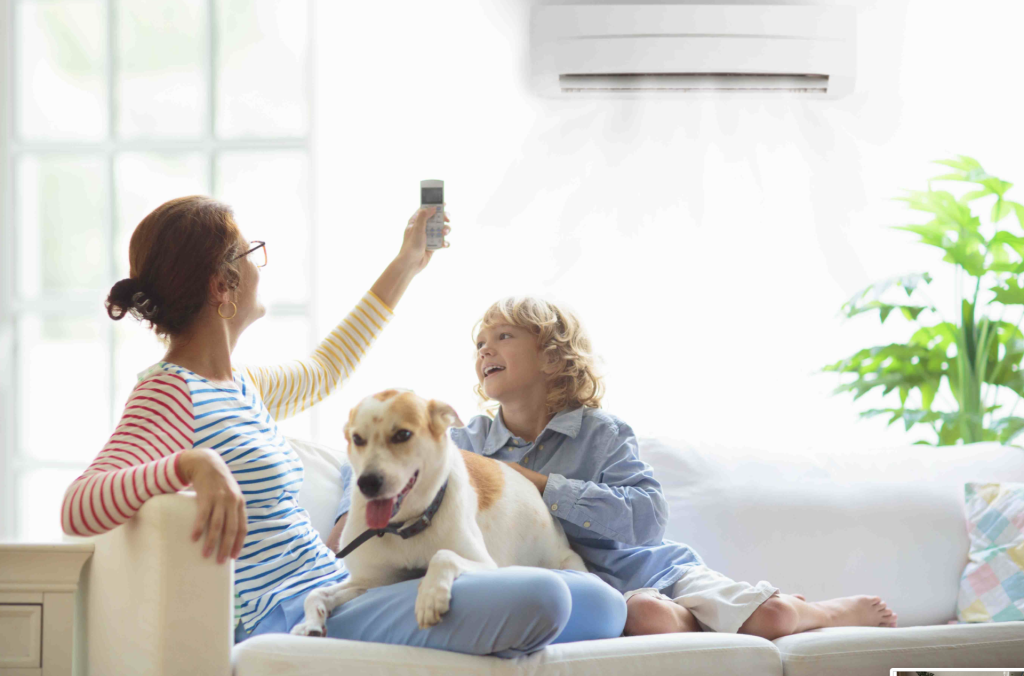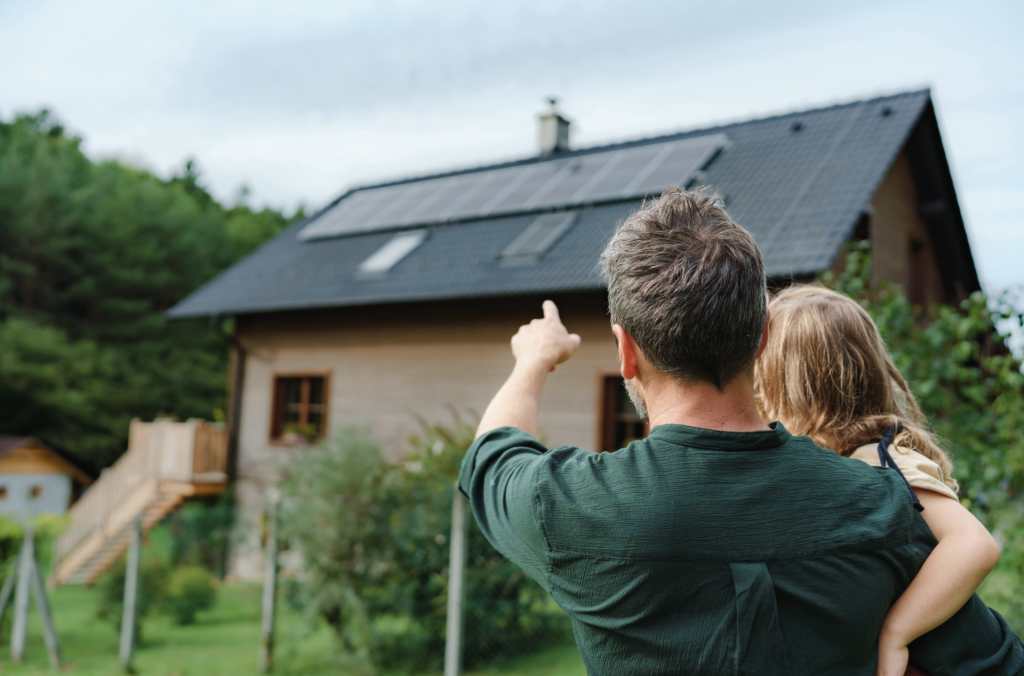Energy-efficiency upgrades such as insulation and a heating and cooling system will make your home cozy and comfy
COMFORT. It’s what we want most in our homes. Beyond cozy furnishings, heirlooms and family photos, there’s a different kind of comfort that comes in ways we don’t see. It comes from having an energy-efficient home that results in a host of comforts such as better indoor air quality, noise reduction and improved temperature consistency. The one result you will see: more money in your pocket thanks to lower heating and cooling bills.
Although there can be up-front costs associated with energy-efficient homes, the investment will pay off in comfort spades. Improving your home’s energy efficiency involves a variety of approaches, both in terms of design and technology. And, of course, considerations and costs can vary greatly depending on whether you’re retrofitting an existing home or building a new one.

EXISTING VS. NEW
Remodeling an older home can have its challenges, but if you’re going through it, you might as well integrate as many efficiency upgrades as possible. Just know that older homes may have structural limitations that make it difficult to add insulation, improve windows or update HVAC systems without significant alterations. Renovations can also reveal hidden problems such as outdated wiring, plumbing issues or even asbestos. As you can imagine, these and other considerations can make the efficiency upgrades more expensive than if you were adding them to a new construction home because they can often involve extensive modifications, repairs and upgrades to existing structures.
Building a new home to be energy efficient is generally easier and often more cost-effective than retrofitting an older home. New homes can be designed and built from the ground
up to meet the latest energy-efficiency standards and building codes. This includes advanced insulation, high-efficiency windows and modern HVAC systems. It’s also a more streamlined process when the energy-efficient components are integrated into the design process, allowing for optimal orientation, natural lighting and passive heating and cooling solutions. Additionally, when building a new home, it’s easier to incorporate renewable energy systems like solar panels, geothermal heating and energy-efficient lighting into the initial design and construction.
Either way, there are many components to consider, and just because the investment might be higher for an existing home, it’s the comfort you want. And if you love your home or its location, the cost might be worth staying put.
BIG-TICKET EFFICIENCY OPTIONS
Insulation can be a great place to start if your home needs it. Enhancing insulation in walls, roofs and floors reduces heat loss in colder months and keeps the house cooler when it’s hot outside. You’re likely familiar with fiberglass, which is an easy and cost-effective option when you have access to open walls. Blown-in insulation comes in fiberglass or cellulose and is best when you can’t—or don’t want to—open up the walls. Sealing air leaks is often done hand-in-hand with insulation. You can have them in obvious places such as around doors and windows, but air might be seeping in and out around baseboards, vents and even electric outlets and switches.
Usually a big-ticket item, but also one that can make a big impact on comfort and the beauty of your home is windows. If you’re replacing existing windows, you have two installation choices: inserts or full replacements. Inserts are a good option for when your existing window frames and trim are in good condition and you opt to keep them. Full replacement windows include a new frame and have trim or flanges that cover the areas where the window meets the exterior home finish. Remodel or new construction, you want windows with low-emissivity (low-E) coatings, double or triple glazing, and insulated frames that can significantly reduce heat transfer. Lucky for today’s homeowners, energy-efficient windows are the go-to, so they’re available in a variety of styles and price points based on the level of efficiency.

Another major energy-efficiency consideration is your home’s heating and cooling system. In Denver, the price to heat your home with a furnace system might be significantly lower than in other areas of the country based on natural gas prices. However, if you factor in the environmental costs, you might make a different choice. Heat pumps—or mini-split systems—run on electricity but can be highly tailored to your home with individual temperature settings by room for better climate control. An easy addition to your heating and cooling system is a smart thermostat that allows you to access the system through an app on your phone, so if you forget to turn the thermostat down before leaving for a long weekend in the mountains, you can log on and make the adjustment. These also allow you to set schedules to run the system more efficiently.
Installing solar panels can generate renew- able electricity to power the house, reducing reliance on grid electricity and lowering utility bills. Oftentimes, adding solar to your home adds overall resale value, and there can be incentives and rebates lightening the investment load. Of course, you have to weigh the aesthetic component and whether or not you have the space required for a proper solar installation. If you’re doing an extensive re-model or building new, your design could incorporate passive solar design principles, such as orienting windows to maximize solar heat gain in winter and shading them in summer, to naturally regulate indoor temperatures.
MORE WAYS TO SAVE
Upping your home’s efficiency is best met through the items above, but that doesn’t preclude you from making incremental changes that can all add up. Change out incandescent lights. LED bulbs consume significantly less energy than traditional incandescent bulbs and have a longer lifespan. When replacing appliances like refrigerators, dishwashers and washing machines, look for models with high Energy Star ratings. Insulate your hot water pipes and/or upgrade to an energy-efficient water heater such as a tankless or heat pump style. Finally, look outdoors for ways to make your indoors more comfortable. Planting trees and shrubs strategically around your home can provide natural shading and windbreaks, reducing heating and cooling demands. Whether you opt to go all-in on an energy-efficiency upgrade or select small ways to increase efficiency, the ultimate goal is to achieve maximum comfort for you and your family with a healthier and more enjoyable living environment.
READY TO GO GREEN?
These organizations and home improvement companies can help! Rebates and more information Energy Smart Colorado.
energysmartcolorado.org
GRAVINA’S WINDOW CENTER OF LITTLETON
209 W. Littleton Blvd.
Littleton
303.794.0490
windowsforyourhome.com
IMPACT ENERGY SOLAR INSTALLATION
7334 S. Alton Way, Unit 14J Centennial
888.240.1131
impactenergy.net
BRAVAS COLORADO HOME AUTOMATION
7661 Shaffer Pkwy.
Littleton
303.277.9983
bravas.com
PREMIER HEATING AND AIR
8000 E. Prentice Ave. Ste. C5 Greenwood Village
720.743.3779
premieraircolorado.com


